The Times Higher Education-QS World University Rankings 2008 of the world’s top 500 universities ranks Delhi U — India’s top-rated varsity — at a distant No.274, several notches below higher education institutions in China, Malaysia and Thailand. Ajit Jha reports
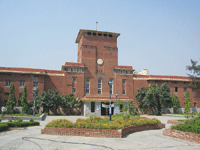 There is discernible, even if muted elation on the sylvan 300 acre campus of Delhi University, sited in the Northern Ridge of India’s capital, and arguably most academically advanced city.
There is discernible, even if muted elation on the sylvan 300 acre campus of Delhi University, sited in the Northern Ridge of India’s capital, and arguably most academically advanced city.
In a survey published on October 9 last year — the Times Higher Education- QS World University Rankings 2008 — Delhi University (ranked 274) was adjudged India’s numero uno university (after the Indian Institutes of Technology Delhi (154), Bombay (174) and Kanpur (242)) on the parameters of academic peer review, employer review, faculty-student ratio, research citations per faculty, international faculty and proportion of international students (see box p.71).
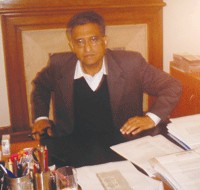 Dr. Deepak Pental, a botany alumnus of Punjab University and former director of the South Campus of Delhi University (DU) who took charge as vice-chancellor in 2005, is modestly elated. “I attribute our high India ranking to DU’s reasonably good standard of research, second only to the Indian Institute of Science, Bangalore which is a dedicated science and technology institute. Our alumni are spread all over the world and the quality of our teaching staff is excellent, particularly in the science, life sciences, botany and chemistry faculties. Likewise teaching and research in our sociology department is way above Indian standards,” says Pental.
Dr. Deepak Pental, a botany alumnus of Punjab University and former director of the South Campus of Delhi University (DU) who took charge as vice-chancellor in 2005, is modestly elated. “I attribute our high India ranking to DU’s reasonably good standard of research, second only to the Indian Institute of Science, Bangalore which is a dedicated science and technology institute. Our alumni are spread all over the world and the quality of our teaching staff is excellent, particularly in the science, life sciences, botany and chemistry faculties. Likewise teaching and research in our sociology department is way above Indian standards,” says Pental.
Dr. A.K. Dubey, registrar ascribes DU’s premier position among Indian universities to “three broad factors”. “One, our research standards and outcomes have improved dramatically over the years, especially in science and genetics. Secondly, our study programmes have been made more contemporary. For example, in commerce, the syllabus was three to four decades old and quite unsuitable to the needs of business and industry. The new courses are market oriented, innovative and proactive. And third, although infrastructure facilities are not adequate for our needs, we have made optimal use of available facilities through implementation of better management practices,” says Dubey.
But while conceding the superior research capability, highly qualified faculty and better infrastructure of DU, vice-chancellors of India’s other high profile universities unanimously claim that DU’s numero uno position is mainly because of the huge amounts the Central government pours into its coffers by way of development grants, indiscriminate tuition subsidies and research assignments. In fiscal 2006-07, the university received annual grants aggregating Rs.178 crore from the Delhi-based University Grants Commission (estb. 1956), which doles out Rs.1,269 crore in grants every year to India’s 18 Central universities for maintenance (including salaries, pensions etc). Moreover the commission also confers ad hoc special grants-in-aid aggregating Rs.515 crore to Central and state funded universities for construction, mainte-nance and repairs of buildings and infrastructure.
In fiscal 2006-07 DU’s total income receipts from all sources aggregated Rs.401 crore, which although modest by international standards for a university with 83 affiliated colleges and 220,000 students, endows it with the largest varsity budget in India. In comparison the annual budgets of state government funded institutions viz. University of Mumbai (Rs.150 crore), University of Calcutta (Rs.143.18 crore), Lucknow University (Rs.76.51 crore) and Bangalore University (Rs.140 crore) pale into insignificance.
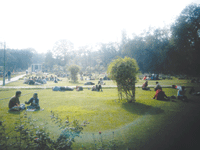 Moreover because of its favourable location in the national capital and on the threshold of UGC, Delhi University is showered with special grants-in-aid. “In the three year period, from 2002-03 to 2004-05, UGC provided almost Rs.15 crore in the form of special one-time grants-in-aid, including Rs.6.5 crore for the repair and renovation of buildings; Rs.2.8 crore for upgradation of an electric sub-station; Rs.1.6 crore for improving facilities in university hostels; Rs.1.5 crore for renovation of the university auditorium, and Rs.1.1 crore for improving the drainage-sewerage system,” says an accountant in DU who requested anonymity. Likewise during the Tenth Plan (2002-07), DU received grants for constructing four major buildings — a sum of Rs.2.84 crore for a multi-disciplinary academic complex; Rs.1.5 crore for an academic research building; Rs.1.5 crore for a conference centre in the main campus, and Rs.1.79 crore for an academic complex in the South Campus.
Moreover because of its favourable location in the national capital and on the threshold of UGC, Delhi University is showered with special grants-in-aid. “In the three year period, from 2002-03 to 2004-05, UGC provided almost Rs.15 crore in the form of special one-time grants-in-aid, including Rs.6.5 crore for the repair and renovation of buildings; Rs.2.8 crore for upgradation of an electric sub-station; Rs.1.6 crore for improving facilities in university hostels; Rs.1.5 crore for renovation of the university auditorium, and Rs.1.1 crore for improving the drainage-sewerage system,” says an accountant in DU who requested anonymity. Likewise during the Tenth Plan (2002-07), DU received grants for constructing four major buildings — a sum of Rs.2.84 crore for a multi-disciplinary academic complex; Rs.1.5 crore for an academic research building; Rs.1.5 crore for a conference centre in the main campus, and Rs.1.79 crore for an academic complex in the South Campus.
In addition, since the progeny of the country’s most powerful politicians and bureaucrats are enrolled in Delhi University or one of its 83 affiliated colleges, the varsity is the favoured child of the Delhi durbar, and is showered with grants from various government ministries and organisations. For instance during the Tenth Plan period, it received Rs.3.5 crore from the Delhi Urban Heritage Foundation for restoration of the Viceregal Lodge that houses the vice-chancellor’s office. Other donors of DU include the ministry of information and technology (Rs.3.85 crore for a connectivity project); a grant of Rs.2 crore from the Union ministry of human resource development for a network and connectivity project; Rs.5.4 crore for the construction of a biotechnology centre in the South Campus from the state government of Delhi.
The outcome of this massive funds flow is that DU has been able to upgrade and contemporise its infrastructure and classroom facilities to an extent unmatched by any university in India, placing it on a par with a handful of globally bench-marked institutions of higher education such as the seven IITs, six IIMs and the Indian Institute of Science, Bangalore. Thus, today DU boasts 34 high quality electronically networked libraries with a collection of 1.5 million bound volumes, and 31 electronic databases, which the head of the DU library system Dr. S. Majumdar claims is the “biggest in Asia”. Moreover equipped with a university science instrumentation centre, the bio-tech centre and high quality science labs of the north and south campuses, DU is also India’s most wired university with 64 of its 83 undergrad colleges connected with the university network through 6,000 nodes spread across Delhi.
Unsurprisingly the huge invest-ments made in developing the infrastructure and facilities of DU’s scenic north and south campuses sprawled over several hundred acres of high-price real estate (and in the infrastructure of its high-profile undergrad colleges), attracts the brightest and best teachers and students from across the country. The faculty of DU and its affiliate colleges has included Dr. Amartya Sen, Dr. Manmohan Singh, and household names such as Dr. V.K.R.V. Rao, Dr. A.M. Khusro, Dr. Kaushik Basu, Dr. M.N. Srinivas, Dr. Andre Betteille, Dr. D.N. Jha, Dr. Romila Thapar and Deepak Nayyar among others, and is by common consensus the best in the country. And the university’s superb library, labora-tories and e-learning infrastructure enable its faculty and scholars to produce erudite research papers published by reputed journals around the world.
According to a March 2008 study published by Dr. Bhaskar Mukherjee, lecturer of library science at Benares Hindu University, of the 10,281 research papers published in reputable journals in India and abroad, 3,976 were written by faculty and/or doctorate students of DU, with BHU contributing 3,207, Aligarh Muslim University 1,691 and JNU, Delhi 1,407. Quite clearly DU’s excellent infrastructure enables research initiatives. In this connection it is also pertinent to highlight that DU colleges such as St. Stephen’s, Shriram College of Commerce, Miranda House and Lady Shri Ram which monotonously top the India Today annual rankings of India’s best colleges, serve as high quality faculty feeder institutions of DU.
Consequently vice-chancellors of other universities are less than impressed by Delhi University being ranked India’s top university in the THE-QS World University Rankings. “How can you compare this institution with Delhi University when our grant from the state government is Rs.16 crore and frozen since 1997? During the past 20 years not a single laboratory in Lucknow University has been upgraded, and no scientific paper from the university has been published in a reputable national or international journal. We have repeatedly asked the state government to increase our annual grant, but with no success. Moreover we have prepared a Rs.100 crore development plan for the university for the Planning Commission, but its clearance is pending with the state government. Therefore until our finances improve radically, we have a long way to go before we can compare Lucknow with Delhi University,” says G.P. Tripathi registrar of Lucknow University.
 This grievance about unequal government funding is also voiced by Dr. A.D. Sawant, pro vice-chancellor of the state government funded University of Mumbai. According to Sawant the aggregate funding from all government sources for the university is Rs.150 crore, including Rs.15 crore from the state government towards the university’s annual salary bill. With students fees contributing less than 10 percent of the varsity’s annual expenditure of Rs.150 crore, the management’s main source of income is from research projects and assignments commissioned by Indian industry. “Although ranked lower than DU at 432 in the THE-QS World Rankings 2008, we believe that our achievements in research are better than DU, which has got greater recognition for research in the humanities and social sciences. During the past five years the number of science research papers published in international journals by our university has increased by 156 percent. If we had the funding of DU, we would be ranked much higher in the THE-QS table,” says Sawant.
This grievance about unequal government funding is also voiced by Dr. A.D. Sawant, pro vice-chancellor of the state government funded University of Mumbai. According to Sawant the aggregate funding from all government sources for the university is Rs.150 crore, including Rs.15 crore from the state government towards the university’s annual salary bill. With students fees contributing less than 10 percent of the varsity’s annual expenditure of Rs.150 crore, the management’s main source of income is from research projects and assignments commissioned by Indian industry. “Although ranked lower than DU at 432 in the THE-QS World Rankings 2008, we believe that our achievements in research are better than DU, which has got greater recognition for research in the humanities and social sciences. During the past five years the number of science research papers published in international journals by our university has increased by 156 percent. If we had the funding of DU, we would be ranked much higher in the THE-QS table,” says Sawant.
The same mix of reasons which attracts the most qualified and competent teachers from across the country to Delhi University and its affiliate colleges, is also a magnet for the country’s brightest youth who make up the student body of DU. Its highly-acclaimed colleges are the natural destinations of school-leaving students of north India’s top public schools such as Doon, Lawrence Sanawar, Mayo College, Ajmer, and the capital’s highly-rated Shri Ram, DPS and Vasant Valley among others which topped the EducationWorld-C fore annual survey of India’s most respected schools (see EW September 2008).
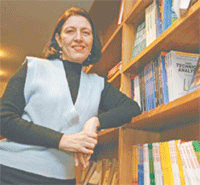 Comments Pervin Malhotra, executive director of Career Guidance India, a well-known student counselling firm in the national capital: “DU attracts the very best students from all parts of India and neighbouring nations, and only the very best students are admitted as indicated by very high cut off percentages for admission. And students from the country’s best public (i.e. private, exclusive) schools such as Doon and Mayo tend to gravitate towards elite colleges such as St. Stephen’s and Lady Shri Ram.”
Comments Pervin Malhotra, executive director of Career Guidance India, a well-known student counselling firm in the national capital: “DU attracts the very best students from all parts of India and neighbouring nations, and only the very best students are admitted as indicated by very high cut off percentages for admission. And students from the country’s best public (i.e. private, exclusive) schools such as Doon and Mayo tend to gravitate towards elite colleges such as St. Stephen’s and Lady Shri Ram.”
The advantages DU enjoys over the country’s other universities by virtue of its location in the national capital, are reinforced by the privileged status of Delhi. Distinguished from India’s crumbling metros and A and B tier cities by its historical importance, well-planned boulevards, scenic gardens and heritage monuments, relatively abundant low-cost housing and transport infras-tructure which includes the rapidly expanding subterranean Metro rail network, Delhi (including the National Capital Region) has crystallised into India’s most happening city and a major hub of industry and commerce, rivalling Mumbai’s status as India’s commercial capital.
Additionally India’s administrative capital offers DU and affiliated college students co-curricular and supple-mentary education opportunities unmatched by any other urban habit-ation countrywide. Apart from hosting the who’s who of India’s political class, the civil services and judiciary, Delhi offers university students access to a plethora of international and national seminars, symposia and lectures by top academics, intellectuals, policy makers and political leaders from within India and around the world. “Delhi is undoubtedly India’s most intellectually alive city. Its well-functioning institutions and archives — National Museum, National School of Drama, National Gallery of Modern Art among others — create excellent opportunities for extra-curricular and self-education which no other city in the subcontinent offers,” says Prof. Ashok Singh member of the academic council of DU.
Yet if despite this favourable confluence of factors, DU has been listed half way down the THE-QS table of the world’s best 500 universities (four Chinese varsities were ranked among the top 200 in 2008 and five in 2007), quite obviously something is wrong with India’s higher education system which supports it. Paradoxically, despite DU being India’s most well-endowed university, its major problem is a chronic funds crunch and its abject dependence on UGC and Central government largesse. Although the university’s total income from all sources aggregated Rs.401 crore in 2006-07, on a per capita basis the amount expended for undergrad and higher education of DU’s 220,000 students is a mere Rs.18,000 per year, too meagre a sum to provide quality higher education. Against this, per capita spending on students in tertiary education in the US and UK is the equivalent of Rs.10 lakh ($24,100) and Rs.5.85 lakh ($11,900) respectively, according to International Education Indicators (a US department of education publication).
The root cause of the funds crunch which has slowed, if not halted, DU’s upward trajectory in the THE-QS league tables is government policy. Apprehending student unrest and resistance, succe-ssive governments in New Delhi have preferred to increase subsidy outlays for higher education rather than hike tuition fees, which have remained static for over five decades. The total fee paid by graduate and postgrad students in DU varies between a paltry Rs.5,000-7,000 ($120-165) per year, less than 2 percent of what university students pay in the US and UK.
Excessive and indiscriminate subsidisation is also a feature of undergrad education in the affiliated colleges of DU. The highest annual composite fee is levied by the blue-chip St. Stephen’s College at Rs.14,171 per year or Rs.1,180 (US$24) per month, of which the tuition fee is a mere Rs.15, less than the price of a cup of coffee in the chic new cafeterias which have mushro-omed in the national capital during the past five decades. As a consequence, tuition fees which contributed 15-20 percent towards the recurring expenses of institutions of higher education in the 1950s, contribute less than 2-3 percent currently.
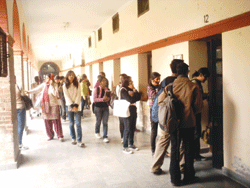 The impact of blanket subsidisation of higher education in DU has been national. Right across the country, state government funded universities and colleges following the DU example, have frozen tuition fees at rock-bottom levels. And since unlike DU, the overwhelming majority of the country’s 352 universities and 18,000 colleges are not beneficiaries of subsidies from a multiplicity of government departments and instit-utions, their infrastructures are in a woeful state of disrepair, and teaching-learning standards have fallen sharply.
The impact of blanket subsidisation of higher education in DU has been national. Right across the country, state government funded universities and colleges following the DU example, have frozen tuition fees at rock-bottom levels. And since unlike DU, the overwhelming majority of the country’s 352 universities and 18,000 colleges are not beneficiaries of subsidies from a multiplicity of government departments and instit-utions, their infrastructures are in a woeful state of disrepair, and teaching-learning standards have fallen sharply.
According to a NASSCOM-Mckinsey World Institute study conducted in 2005, 75 percent of graduates from India’s 2,240 engineering colleges and 85 percent from arts, commerce and science colleges are unemployable, and require extensive on-the-job training before they are industry-ready. Unsurprisingly, the in-house induction training costs of Indian industry are among the highest in the world. And with the Central government unable to meet its fiscal deficit restriction target and rightly focussing on the universalisation of primary education, and all state governments tottering on the verge of bankruptcy, there is little prospect of substantially larger government subsidisation of higher education. Little wonder that in its letter of recommendations to the prime minister dated January 12, 2007, the National Knowledge Commission pressed for higher tuition fees, so they meet at least 15-20 percent of the annual expenditure of institutions of higher education (cf. 3-5 percent currently).
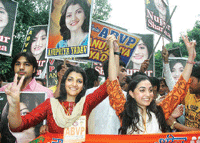 Yet DUSU (Delhi University Students Union), which as a body comprising privileged and educated youth should be aware of national expenditure priorities, is adamantly opposed to higher tuition and development fees in India’s cash-strapped institutions of higher education. Says DUSU president Nupur Sharma: “I agree the tuition fees we pay are pathetically inadequate. The student welfare fee per student per annum is a meagre Rs.5. You don’t get a cup of coffee for that amount. Tuition fees are also nominal. Therefore I believe they should be raised modestly.” Nevertheless Sharma refuses to specify to what extent tuition fees should be raised.
Yet DUSU (Delhi University Students Union), which as a body comprising privileged and educated youth should be aware of national expenditure priorities, is adamantly opposed to higher tuition and development fees in India’s cash-strapped institutions of higher education. Says DUSU president Nupur Sharma: “I agree the tuition fees we pay are pathetically inadequate. The student welfare fee per student per annum is a meagre Rs.5. You don’t get a cup of coffee for that amount. Tuition fees are also nominal. Therefore I believe they should be raised modestly.” Nevertheless Sharma refuses to specify to what extent tuition fees should be raised.
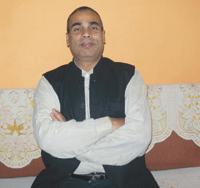 However, Dr. Amar Nath Jha, professor of history and former member of the university’s academic council is dead set against fee hikes for DU students. “Education and health are the responsibility of the state. The health sector is in very poor shape today. The few good hospitals are beyond the reach of a significant majority in India. We don’t want education to meet the same fate. Every citizen should have access to quality education. Putting a price will deny access to deserving and genuine students who can’t afford to pay,” says Jha, voicing the popular sentiment on the DU campus.
However, Dr. Amar Nath Jha, professor of history and former member of the university’s academic council is dead set against fee hikes for DU students. “Education and health are the responsibility of the state. The health sector is in very poor shape today. The few good hospitals are beyond the reach of a significant majority in India. We don’t want education to meet the same fate. Every citizen should have access to quality education. Putting a price will deny access to deserving and genuine students who can’t afford to pay,” says Jha, voicing the popular sentiment on the DU campus.
And although office bearers of the 8,000 strong Delhi University Teachers Associ-ation (DUTA) are in the vanguard of agitations for higher pay for faculty —the Sixth Pay Commission has recommended 70-80 percent increase in the monthly remuneration packages of college and university teachers —they are adamant that better pay for its members should be unconnected with students’ tuition fees. “Provision of higher education is the responsibility of the government. Tuition fees can be raised only to a reasonable extent. We can never endorse market-driven fee structures. Please don’t connect student fees with the salary of teachers,” says DUTA president Aditya Narayan Misra.
Yet even if tuition fees frozen at 1950 levels have ceased to be a significant source of revenue for DU, to its credit the university’s managment has created other new sources of income. Thus research and consultancy assignments could well become a major revenue source for the university. With its excellent infrastructure and faculty, the university is well equipped to interface with industry, and undertake commis-sioned research and consultancy assign-ments. Surprisingly DU authorities adamantly refused to disclose the commissioned research income of the university. However it is believed to have risen substantially in recent years. Moreover given that its alumni have done well for themselves in India and abroad, the DU management is reportedly about to launch a major offensive to solicit institutional development donations from alumni to build a corpus fund, which will finance infrastructure and new study programmes.
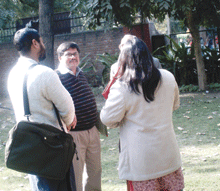 Yet if such independent revenue generating initiatives are to succeed, mindset changes are required in the Union HRD ministry and UGC. “Unfortunately the UGC’s grants disbursal policy frustrates financial innovation and independent resource generation by universities,” says vice-chancellor Dr. Deepak Pental. “Under current UGC policy, if we raise resources internally, the commission cuts its grant by an equal amount. Therefore there is no incentive to raise resources. It is a paradox that if we raise funds through commissioned research, the grant is reduced propor-tionately, while in universities abroad it’s the other way around. This UGC policy needs to be re-examined so that we actively begin looking for research and consultancy assignments.”
Yet if such independent revenue generating initiatives are to succeed, mindset changes are required in the Union HRD ministry and UGC. “Unfortunately the UGC’s grants disbursal policy frustrates financial innovation and independent resource generation by universities,” says vice-chancellor Dr. Deepak Pental. “Under current UGC policy, if we raise resources internally, the commission cuts its grant by an equal amount. Therefore there is no incentive to raise resources. It is a paradox that if we raise funds through commissioned research, the grant is reduced propor-tionately, while in universities abroad it’s the other way around. This UGC policy needs to be re-examined so that we actively begin looking for research and consultancy assignments.”
Yet quite clearly if India’s premier university is to move up to a position of respect in the THE-QS and other league tables of the world’s best universities, the onus of improving and contemporising its infrastructure, study programmes, curriculums and learning outcomes doesn’t devolve entirely upon government and the DU management. The university’s relatively privileged students community has also to play its part. In particular, even if it doesn’t immediately agree to rationalisation of the moribund fees structure of the varsity as it should, to release resources for primary and secondary education, DUSU and the students community need to immediately agree to replace the prevailing system of subsidy for all, with a new regime of targeted subsidies for needy students. Larger fee inflows into DU’s coffers apart, there is an inherent injustice in students from the country’s top private schools charging mind-boggling tutition fees, paying as much — or as little — as children from genuinely poor households.
In the longer run, DU’s students unions and student community need to display greater maturity and accept the logic of higher tuition fees as the price for transforming this privileged varsity into a world class institution. To expect onerous government subsidisation of higher education ad infinitum at the cost of primary and secondary education, is a self-defeating strategy, as the quality of students entering tertiary institutions — including DU — will inevitably be substandard. Nor unless the varsity’s fees income stream swells, will DU be able to attract high quality faculty or build modern academic infras-tructure, which are defining features of the world’s most respected universities. Neither will it be in a position to wrest the academic autonomy that great, world class institutions need to win and acquire global respect.
More than half a century ago, Delhi University laid down a bad precedent of indiscriminate over-subsidisation of higher education which colleges and universities across the country were obliged to follow. Now in the new era of globalisation, it needs to set a good precedent by rationalising tuition fees to transform DU’s trickle under this revenue head into a major stream. This is the first step to empower the beleaguered institutional management to transform this high-potential university gifted with some of the country’s best colleges, into a genuinely respected university ranked high in international league tables. And perhaps more important, India’s numero uno university urgently needs to transform itself into a world class institution which will serve as a beacon and example to the country’s floundering 352 universities and 18,000 colleges.
With Vidya Pandit (Lucknow), Debolina Sengupta (Bangalore) & Harshikaa Udasi (Mumbai)